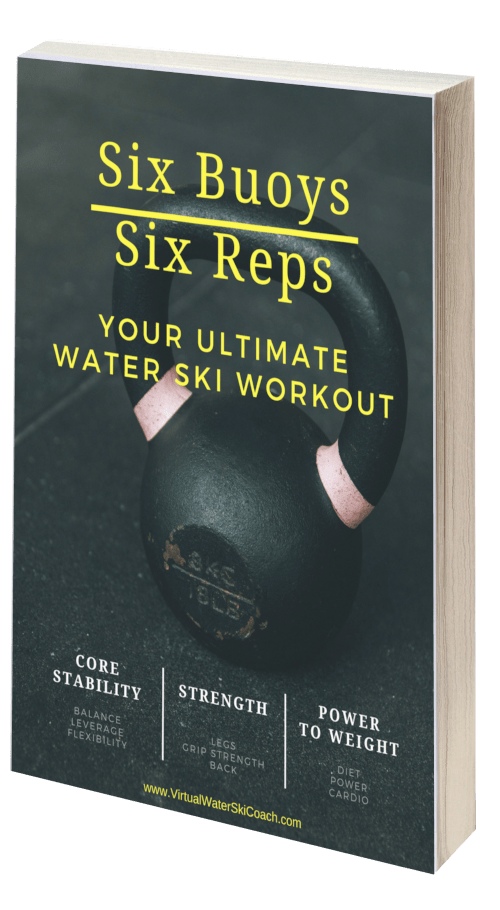
For maximum control, you need to get your weight forward on your slalom ski.
This is the second of a two-part series on why – and how – to get your weight forward on your slalom ski.
In part one of this article, we looked at why you should get our weight forward.
Basically, the more you lean on the back of your ski, the less control you have. The less the ski will go where you want. The main point of moving your weight towards the tip of your ski, is to have more of your ski in contact with the water. This is particularly relevant when turning around the slalom course.
If you haven’t read the first part of this article yet, jump on over and read it now, then come meet me back here. I’ll lay out a simple technique, and a couple of cues, that will have you carving your ski deep into those slalom turns.
How do you get your weight forward?
There are some subtleties to this seemingly simple concept.
Let’s start with an analogy: Have you ever noticed when somebody has particularly good posture? Think about the difference between a person who is holding their chin high and their shoulders back, versus somebody who is simply sticking their chest out. The visual differences between these two examples can be quite subtle, but the difference in the overall impression can be vast.
Back to the tournament course now, and the two key points to keep in mind about the correct placement of your weight over the ski:
Firstly, you don’t want all of your weight on the front. Aim for about 30% of your weight on your back foot and 70% on the front.
If you’re doing this right it will feel like you have very little weight on your back foot, and you should find that you’re standing on just the ball of your rear foot. Practice doing just that, to get the feel for it.
Secondly, simply hinging forward at the hip will definitely not work. However there is a simple technique that will make all the difference, and this is where the analogy comes into play. Rather than simply bending forward to bring your face closer to your ski tip, bring your entire frame downwards and forwards.
Here’s the trick for achieving this: Instead of thinking about bending your hips or your knees, think about flexing your ankles in order to bring your front knee – in fact your whole body – closer to the ski tip. Your knees will naturally flex further to achieve this, but if you keep your attention on bending your ankles, you’ll find that your hips and shoulders move downwards and forwards towards the ski tip, and everything will remain in a nice straight line. Your hips will stay forward and close to your handle across the wake, which maintains your leverage and traction against the pull of the boat.
This technique will simultaneously lower your centre of gravity and bring it forward – for all the benefits outlined earlier – while maintaining your stacked position leaning away from the boat, and engaging more of your ski with the water.
Another way to think of this is to keep your body ‘stacked’ in the position it’s in, from your head to your knees, but just shift your ski 5-10cms backwards underneath you.
In your turns, keep your knees soft and more bent than you would think you’d need to. This will maintain that full water contact that you’ve gained in the pre-turn, right through the turn and across to the other wake.
A note on straight legs:
Getting this wrong by standing on the back of the ski – and keeping your weight on the back half of it – pretty much requires that your front leg be straight. This is the main reason that straight-legged turns are so problematic.
Straight legs are the biggest contributor to the corkscrew effect that I described in part 1. That corkscrew action of the ski leads to an ineffective turn, followed by poor body and ski position across the wake, and ultimately drifting down course.
If you keep more of your ski in the water during your turns, you’ll not only turn the ski more effectively, but you’ll finish the turn in the perfect position to resist the boat and attack the opposite wake.
Here’s a short video I made for you in my back yard, to demonstrate this technique. Give it a try and let me know how you go!
Your virtual water ski coach,
Todd
PS – Before you go, why not:
